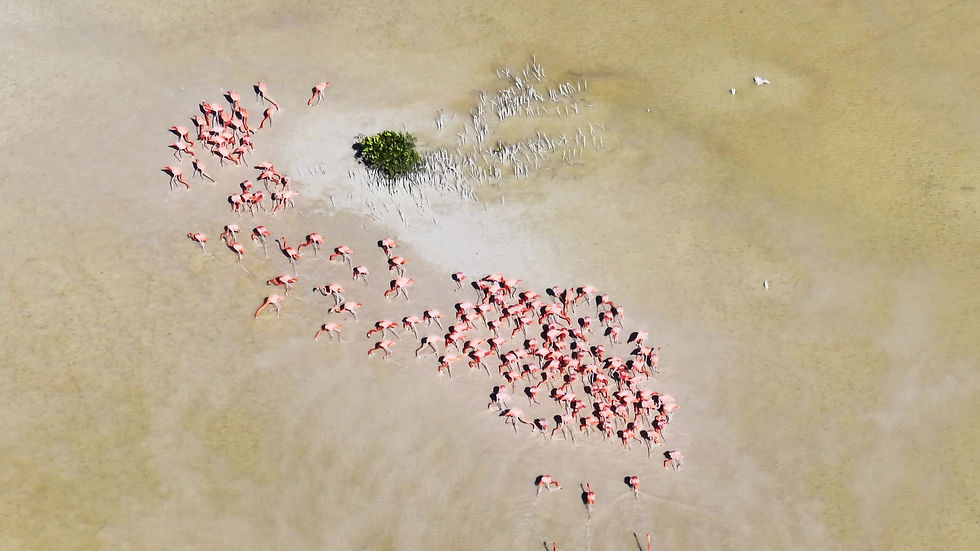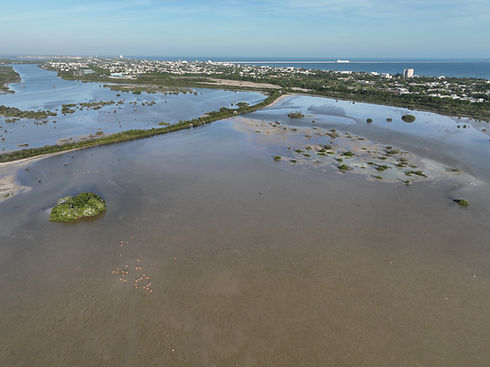


FlamencoLab
Flamingo tracking laboratory


FlamencoLab
Flamingo Tracking Laboratory Citizen science initiative of the Pedro and Elena Hernández AC Foundation


Us
FlamencoLab is made up of citizens and institutions committed to the conservation of Flamenco.
FlamencoLab integrates, curates and disseminates the information generated from ring tracking and satellite transmitters for the conservation of Flamenco and its habitat .
FlamencoLab integra, cura y difunde la información generada del rastreo de anillos y trasmisores satelitales para la conservación del Flamenco y su hábitat.
Our history and mission is conservation
FlamencoLab in a long-term study started in 1987 that consists of placing rings and later, radio transmitters on Flamencos for monitoring. The continuous collection of this data provides information that allows us to understand aspects of the ecology of this species for its conservation.


Photo Juan Pech
Together we are generating crucial information for the preservation of the flamingo habitat, and involving more and more people in improving the relationship between society and wildlife. In our Blog we will be publishing actions aimed at preventing and minimizing the impacts that affect the flamingo population and its habitat.

Our history and mission is conservation
FlamencoLab in a long-term study started in 1987 that consists of placing rings and later, radio transmitters on Flamencos for monitoring. The continuous collection of this data provides information that allows us to understand aspects of the ecology of this species for its conservation.
1
Generamos información clave que respaldan la conservación sostenible de la especie y su hábitat.
2
Implementamos Acciones de Manejo que previenen, evitan y minimizan los impactos que afectan a la población de Flamencos y gestionamos acciones de restauración y compensación de hábitat.
3
Propiciamos la Participación de tomadores de decisiones y sector educativo en la conservación del Flamenco del Caribe, abordando los principales impactos derivados de las:
-
Perturbaciones humanas
-
Modificación y pérdida de hábitat
-
Efectos del cambio climático

La colocación de anillos en Flamencos nacidos en Yucatán ha sido realizada por varias organizaciones; lo que ha dado como resultado registros de datos con diferente conformaciones.Para aquellos interesados en conocer las particularidades de estos, les sugerimos que nos contacte en:



We hope you enjoy our website, hear wonderful stories, and take a moment to leave us your comments. Your information is invaluable to carry out conservation actions for the Flamingo, which despite being an emblematic species, is being threatened.
There is much to discover and learn.

Compártenos tus fotos y obtén información sobre los individuos reportados.
Prepara tu cámara, binoculares o tu telescopio y registra los códigos de los anillos en los Flamencos.


Explora y disfruta de las Rías, Ciénagas y Salinas, y ayúdanos a comprender un poco más sobre los hábitats preferentes de los flamencos.
There is much to discover and learn.
We hope you enjoy our website, hear wonderful stories, and take a moment to leave us your comments. Your information is invaluable to carry out conservation actions for the Flamingo, which despite being an emblematic species, is being threatened.




Observatorio de Flamencos Afectados
¡Únete a nuestra causa! Te invitamos a capturar fotos y videos de Flamencos afectados. Tu colaboración es fundamental para desarrollar planes de mitigación que prevengan accidentes e identifiquen los puntos críticos que amenazan a estas aves. Al reducir la mortalidad por colisiones, tendidos eléctricos y ataques de perros ferales, podemos hacer una gran diferencia. Con esta valiosa información, visibilizaremos el problema y propondremos medidas efectivas para su conservación. ¡Cada reporte cuenta!
An Interesting Finding in the Ciénaga "Arenales de Progreso": Flamingos Born in 2010 and Habitat Preference.

Photo Angelica Schober

50% of the rings registered in Arenales correspond to those born in 2010.
*
The Arenales marsh is a habitat used by 9 different cohorts from 4 to 24 years of age, the average being 11 years old.
*
Arenales is a preferred habitat for the 2010 cohort in the reproductive period (July).
*
Of the 355 Flamingos born and banded in 2010, 3.66% are reported in Arenales.
*
All sites where banding is recorded for the 2010 cohort are hypersaline habitats.
*
The photos of Angelica, Isaac, Mike and Ivan provided valuable clues to identify the importance of Arenales for the 2010 cohort.
*
Despite high disturbance, Arenales offers relevant microhabitats for shelter, foraging and resting for Flamingos.







